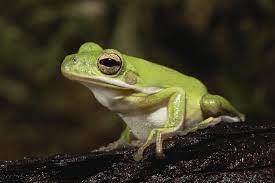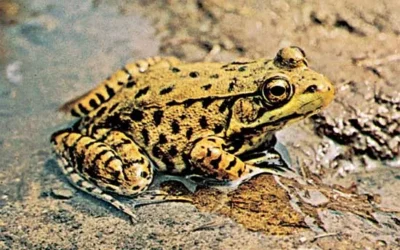Frogs are fascinating creatures with some truly unique biological traits, one of which is their ability to absorb nutrients through their skin. Yes, frogs absorb nutrients through their skin, a process that sets them apart from many other animals. Unlike species that rely solely on their digestive system to process and absorb nutrients, frogs can take in certain essential elements directly through their skin.
This remarkable adaptation plays a crucial role in their survival, especially in their natural habitats, where they often live in environments rich in water and organic material. Understanding how frogs absorb nutrients through their skin not only sheds light on their biology but also highlights the delicate balance of ecosystems that these amphibians help maintain.
Frog Skin: Structure and Function

Frog skin plays a crucial role in their survival, functioning in various ways that are vital for their life in both aquatic and terrestrial environments. Here’s an overview of the structure and function of frog skin:
Structure of Frog Skin
Frog skin is a complex organ that consists of several layers and specialized cells:
- Epidermis:
- The outermost layer of frog skin, the epidermis, is relatively thin and consists of several layers of cells. The top layer, the stratum corneum, is made up of dead, flattened cells that provide a barrier against pathogens and help prevent water loss.
- Dermis:
- Beneath the epidermis is the dermis, a thicker layer that contains connective tissue, blood vessels, and nerves. The dermis also houses various glands, such as mucous glands and granular glands.
- Glands:
- Mucous Glands: These glands secrete mucus, which keeps the skin moist, facilitating gas exchange and providing a protective layer that helps the frog move smoothly in water.
- Granular Glands: Also known as poison glands, these secrete toxic or irritating substances that serve as a defense mechanism against predators.
- Chromatophores:
- These pigment-containing cells are found in the dermis and are responsible for the coloration of the frog’s skin. They play a role in camouflage, temperature regulation, and signaling during mating.
Functions of Frog Skin
- Respiration:
- Frogs are unique in that they can breathe through their skin, a process known as cutaneous respiration. Oxygen diffuses directly through the moist skin into the bloodstream, and carbon dioxide is expelled. This is especially important when frogs are underwater or during hibernation when lung breathing is reduced.
- Water Balance:
- Frogs are often found in moist environments because their skin is highly permeable to water. They absorb water directly through their skin, particularly through areas called “drinking patches” on the belly. This helps maintain hydration without the need to drink water.
- Protection:
- The skin serves as a protective barrier against physical injuries, pathogens, and environmental factors. The mucus layer helps in keeping the skin soft and slippery, making it difficult for predators to grab the frog. The granular glands’ toxins deter predators and can even be lethal in some species.
- Thermoregulation:
- The coloration provided by chromatophores can help frogs regulate their body temperature. By changing their skin color, frogs can either absorb more heat when it’s cooler or reflect heat when it’s warmer.
- Camouflage and Communication:
- The ability to change skin color helps frogs blend into their surroundings, making them less visible to predators and prey. In some species, skin coloration also plays a role in communication, particularly during mating season.
Do frogs absorb nutrients through their skin?
Yes, frogs can absorb nutrients through their skin. This is a unique adaptation that sets them apart from many other animals. Their skin is permeable, meaning it allows certain substances to pass through. This enables them to absorb water, minerals, and even some nutrients directly from their environment.
This ability is particularly important in aquatic environments where nutrient levels may be low. By absorbing nutrients through their skin, frogs can supplement their diet and ensure they have enough to survive.
Absorption of Nutrients Through Frog Skin
While frogs primarily absorb nutrients through their digestive system, their skin does play a role in their overall health and functioning. Here’s a closer look at the functions of frog skin:
- Moisture Absorption: Frogs have highly permeable skin that absorbs water from their environment. This is crucial for maintaining hydration and proper bodily functions, especially for species that live in or near water.
- Respiration: Frogs can absorb oxygen through their skin, which is why their skin needs to be moist. This form of respiration is called cutaneous respiration and is particularly important when they are underwater or in low-oxygen environments.
- Chemical Absorption: Their skin can absorb certain chemicals from their environment, but this is not related to nutrient absorption. It’s more about the uptake of water-soluble substances.
- Protection and Defense: Frog skin secretes mucus and toxins that can protect them from predators and pathogens. These substances are not nutrients but serve vital defensive roles.
Comparing Nutrient Absorption in Frogs to Other Animals

Comparing nutrient absorption in frogs to other animals reveals some fascinating differences and similarities in how different species meet their nutritional needs:
Frogs
- Nutrient Absorption: Frogs absorb nutrients primarily through their digestive system, just like most animals. After ingesting food, the nutrients are broken down in the stomach and intestines, where they are absorbed into the bloodstream.
- Skin Function: Frogs have highly permeable skin that allows them to absorb water and oxygen from their environment, but not nutrients. This skin permeability is crucial for their survival, especially in aquatic or moist habitats.
Mammals
- Nutrient Absorption: Mammals, including humans, rely entirely on their digestive systems for nutrient absorption. Food is broken down in the stomach and small intestine, where nutrients like carbohydrates, proteins, fats, vitamins, and minerals are absorbed.
- Skin Function: Mammalian skin serves primarily as a barrier to protect against pathogens, regulate temperature, and prevent water loss. Unlike frogs, mammalian skin is not permeable to water or oxygen and does not play a role in respiration.
Fish
- Nutrient Absorption: Fish absorb nutrients through their digestive system, similar to frogs and mammals. However, some fish can absorb small amounts of certain nutrients directly from the water through their gills or skin, particularly when it comes to ions like sodium or chloride.
- Skin Function: Fish have permeable skin that, like frogs, allows for the absorption of water and oxygen. This is especially important for osmoregulation, helping fish maintain the proper balance of salts and water in their bodies.
Insects
- Nutrient Absorption: Insects absorb nutrients through their digestive systems after breaking down food in their midgut. However, some insects can absorb small amounts of nutrients directly through their cuticle, especially in the case of parasitic insects that feed on plant or animal fluids.
- Skin Function: Insects have an exoskeleton (cuticle) that provides protection and prevents water loss. Unlike frog skin, the insect cuticle is generally not permeable to water or gases, except in specific cases where nutrient absorption occurs.
Amphibians (General)
- Nutrient Absorption: Like frogs, other amphibians such as salamanders also rely on their digestive systems for nutrient absorption.
- Skin Function: Most amphibians have permeable skin for moisture absorption, respiration, and sometimes absorbing small amounts of chemicals from their environment. However, this skin does not absorb nutrients directly.
Birds
- Nutrient Absorption: Birds, like mammals, absorb nutrients exclusively through their digestive systems.
- Skin Function: Bird skin is primarily for protection and does not play a role in respiration or nutrient absorption. Bird skin is covered with feathers, which also help with temperature regulation and flight.
The Role of the Skin in Hydration
The skin plays a critical role in the hydration of frogs, acting as a primary organ for water absorption. Unlike many other animals, frogs do not drink water through their mouths. Instead, they rely on their permeable skin to absorb water directly from their environment.
This unique adaptation is crucial for their survival, especially in moist and aquatic habitats.
Key Roles of Frog Skin in Hydration:
- Water Absorption:
- Frogs have specialized patches of skin, often referred to as the “drinking patch,” located on their bellies and thighs. These areas are particularly permeable and are the main sites where water absorption occurs. When a frog is in contact with a wet surface, it can absorb water through these patches to stay hydrated.
- Osmoregulation:
- The skin of a frog is involved in maintaining the balance of water and electrolytes within their body. By regulating the amount of water absorbed through the skin, frogs can avoid dehydration and ensure their bodily functions operate smoothly. In freshwater environments, their skin helps to prevent excessive water intake, while in drier conditions, it aids in conserving water.
- Environmental Interaction:
- Frogs’ skin is highly sensitive to environmental changes, making them susceptible to dehydration in dry or polluted environments. Their skin must remain moist to facilitate effective water absorption. This is why frogs are often found in humid or wet habitats, where they can maintain the moisture levels necessary for proper hydration.
- Respiration:
- In addition to hydration, a frog’s skin also plays a role in respiration. Frogs can absorb oxygen through their skin, particularly when they are submerged in water. Keeping their skin moist is essential for this process, as it allows for efficient gas exchange.
Challenges and Adaptations:
- Desiccation: Frogs are at risk of drying out if they are in environments that are too dry. To combat this, some species have developed behaviors such as burrowing into moist soil or seeking shelter during hot, dry periods.
- Permeability: While the permeability of their skin is advantageous for hydration, it also makes frogs vulnerable to pollutants and toxins in the environment, which can easily penetrate their skin and affect their health.
Conclusion
While frogs primarily use their skin for water absorption and respiration, they do not absorb nutrients through their skin. Instead, nutrients are obtained through their digestive system after consuming food.
The phrase “do frogs absorb nutrients through their skin” reflects a common misconception, as their skin is not adapted for nutrient absorption but rather for maintaining hydration and facilitating gas exchange.

